In the stultifying heat of Paramaribo, Celeste and I needed lunch. It what our first day together in this city that we both happen to love, for no real reason except that everything about it says, “hey, why are you here?” and “welcome.” Everything from umbrella-carrying ladies who couldn’t care less if you are behind or in front of them, to a woman who opened Brazil nuts with a knife and instructed me on how to do the same at a local market. The faraway mercantile store you could die of heat exhaustion to get to, but when you do, you can buy the best hammocks for a good price, and people have come in from the interior of the country to buy their plaid fabrics (used as wraps, shirts, and skirts), their kitchen whatnots, their needle and thread. Long walks in the sunshine, boat trips across the way, warungs (Indonesian food) if you like it, frosty coffee if you’re having a “Rituals” (Caribbean Starbucks clone) moment, and for the most part “creole food.”

Creole food, as I’ve come to understand it, is anything in Suriname, French Guiana and Curaçao (and other countries I’ve never been to) that’s a mix of African and something. It’s saucy, curried, oniony, strong in flavor, usually a little oilier than you might eat at home. In Suriname, it’s what you’re eating if you’re not eating at a Warung, a dumpling place, or a roti shop. Sometimes side dishes of it show up besides bami, or nasi, noodle and rice dishes, a sort of combo. And for the most part, it suits me just fine. The last time I had been in Suriname, it was a different time of year, and I remember clearly that the only vegetables I ever saw were green beans, squash and the occasional pepper. When I was in the interior, I was also served a leafy green that was served really sugary. I asked about the sugar, and they said that non-locals don’t like the bitter flavor, so they serve it with sugar for foreigners. I asked them to leave out the sugar for me the next time, and found it tasty. Bitter and spinachy or maybe dasheen-like, but totally edible.
Which is why when we came to the riverside creole/Indonesian lunch spot in Paramaribo and I ordered a dish that came with a vegetable I didn’t recognize the name of, and was told it was bitter, I said, “bring it.” Or actually, I said, “ok, sounds good to me.”
And the food arrived, and we were hungry, and also possibly dying of thirst and desire for refreshment, so we started off the meal, like you do, with a ginger juice. Highly sweetened, and next to Suriname cherry juice, my favorite thing to drink when I’m in Suriname (and I hope to return).
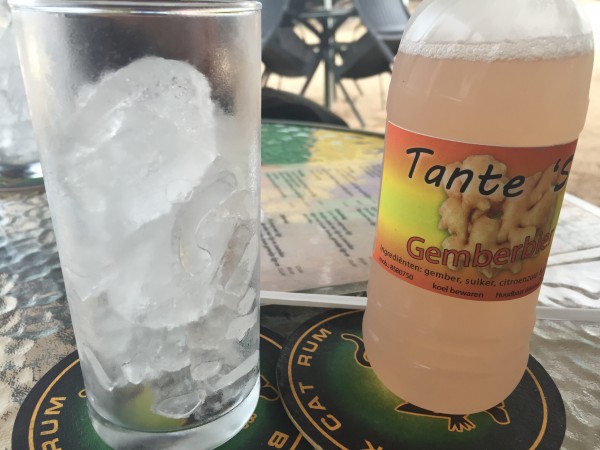
And then there were the noodles. A bit greasy, totally acceptable, fried plantain on top, and my plate with two vegetables. Traveling as a person who loves vegetables is dicey. Depending on where you go, sometimes you can’t have any, unless you consider Sprite a vegetable (and I generally do not). Here I was, traveling in Suriname and I got to have two, plus the salad. I was thrilled. The spinachy one was spinachy, a heart-shaped leaf, they told me. The second, was a bitter vegetable called “antroewa” or jiló (maybe in Portuguese, or a local language), and it looked a lot like an eggplant. “This is the bitter one,” the waiter said, when he set the plate down, with all the artistry of a person setting down a fragile vase.
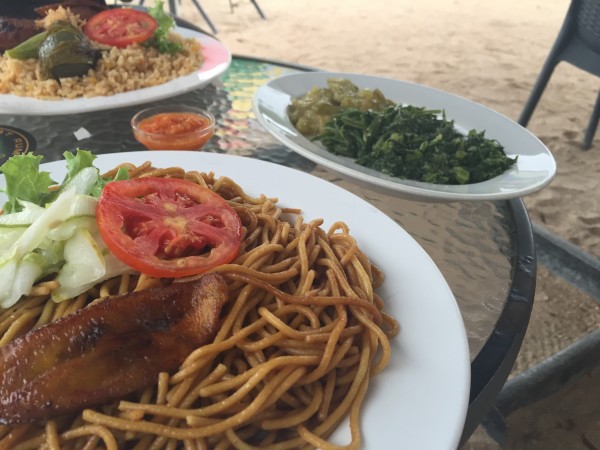
So I dug in, a forkful, and I put it on my mouth.
Oh. My. God.
Bitter is not the word. Bitter is when your tongue says, oh, this is slightly medicinal. Think, a baby aspirin, maybe a grapefruit skin. This was a full on attack, the bitterness turned up to eleven, a fever pitch of bitter.
“How is it?” Celeste asked, probably looking at my face in concern, though I couldn’t see. I could barely hear. I could only taste.
“Aggressive,” I said.
If the human palate has adapted to not eat bitter foods because they might be poisonous, I have not the foggiest idea how how this got into the rotation. You know how when you do wine tasting they explain that you feel tannins here, astringency there? I’m used to tasting things on my tongue, on the various parts, on the interior of my cheeks. You know where I had never tasted bitterness before? In the gums surrounding my molars. I had no idea there were even taste receptors there.
She tasted it, and agreed that it was notably bitter, and wisely stepped back. I kept going. Out of stubbornness? Out of confusion? curiosity? It was like pressing on a bruise. I bit, it bit back. Eventually I gave up, both because I was full, and because it seemed to be injuring me. It also started raining like someone unzipped the sky, but perhaps that’s not that notable in the tropics.
Later on on the trip we spied the vegetable, this time in the markets of French Guiana, 1 euro for that whole plate.
I did some research, on the base of the name I was given in Suriname, and figured out that in English, it is called the scarlet eggplant. It turns red when ripe, but is generally eaten when green. By whom I cannot say, though I imagine this is not a starter food for young humans. I have to assume that when you are habituated it it, it becomes one of those flavors you miss with your whole soul when you can’t find it. Because I have never tasted anything like it before, and doubt I’ll ever find anything like it again. It is originally from Nigeria, and I can imagine that when the first crop came up, on the coast of South America, people were thrilled, because I bet to someone out there, it tastes like home.
I was not precisely thrilled to try it that first time, but I know somehow that if I were to see it again, I’d try that very aggressive vegetable. Because I’m a sucker for nostalgia. Even when it’s not mine.
** I’ve been meaning to write this for a long time. I’m glad I finally did. Taste anything crazy lately?

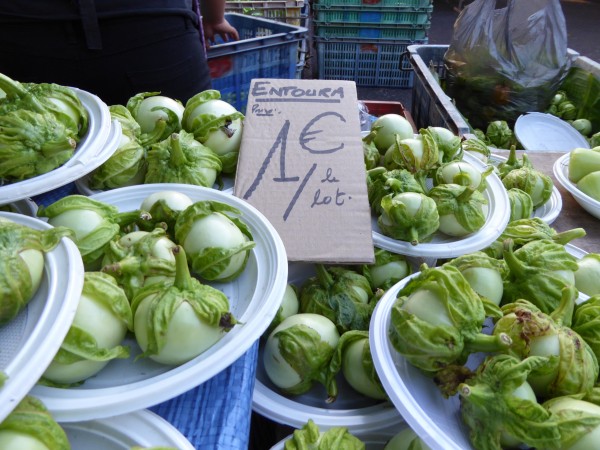

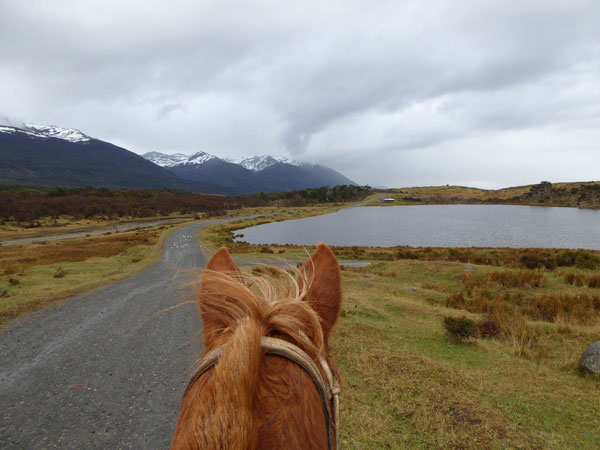



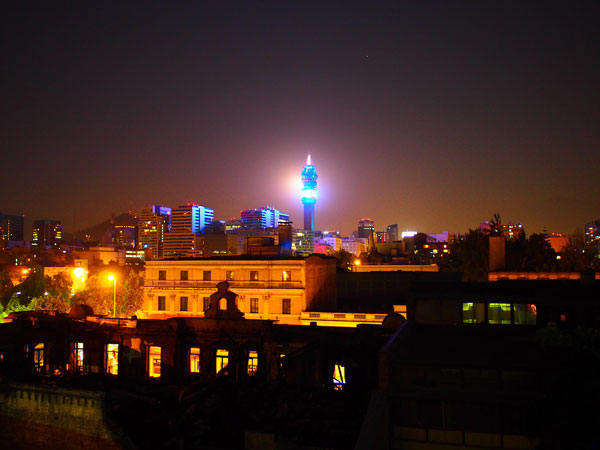
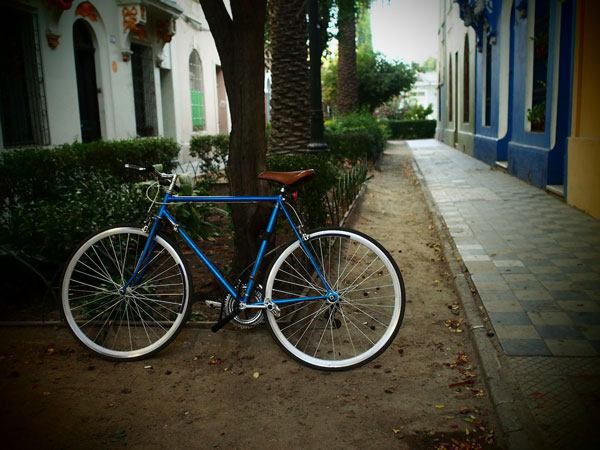


All I can say is that I doubt I’ll ever come across that aggressive vegetable. Did it come with a side of bullets and swords? 😉
nope, it was only aggressive to me and Celeste, it seemed. Surinamese are coming out in droves to talk about how they love it!
If you take out the seeds in the centre it is a lot less bitter. We also pickle the very young ones and then it is also a lot less bitter,…but it will always stay an acquired taste i’m afraid
I would try it again, but like an eggplant, I imagine it’s hard to take out the seeds. We talk about male and female eggplants for the large purple ones, with one having way more seeds than the other. Is it like that for these as well?
Hi, on the pictures i see you got it twice, cooked (next to the green leaves) and prepared in vinegar (on the brown rice). This vegetable when prepared right you would hardly notice the bitterness. I myself love it both ways. Next time you visit suriname please dont hesitate to try it again. We call it “ANTRUWA”.
Ah, that explains how it is spelled in French Guiana on the plate, Entoura! I will correct what it was called to me in Suriname, but they told me the Portuguese name as well, which maybe is what it might be called also in Saamáka or Srnan Tongo? When I was upriver at Pikin Slee several years ago, I found I occasionally understood words here and there, either from how Portuguese or English words are borrowed into these languages. I will totally try it again. If everyone eats it, it must be delicious! Clearly I have to try other preparations. Maybe I can make it a campaign, to eat it every day. Can I have ginger or Suriname cherry juice, too?
You should definitely try it again, if you don’t prepare it right, it could be very bitter. I love it, and it is also very healthy for you. Prevents cancer, if I’m not mistaken. Try it somewhere else when you are there.
I am taking it as a personal invitation to come to everyone’s house to try it when I’m there next. Kidding, but I will try it again. Though I’m not sure when as it’s quite a challenge to get to Suriname from Chile. Time consuming and expensive. But totally worth it. I’ll go again sometime! Has this been posted on some Surinamese forum? I can’t believe you’re all just casual readers of my blog!
Well somebody posted it on FB! we are all having a laugh and discussion about other bitter surinam vegetables.
I LOVE all the comments! I wish I were in your FB group, though it’s not so good at translating Dutch sometimes. Assuming you’re posting it in Dutch. I know everyone’s quite multilingual up (yes, up to me, I’m in Chile) there. 🙂 What other bitter vegetables am I missing? Who wants to listen to me describe them one by one on my next trip to Suriname? No bitter food here in Chile, but we’ve got some weird gooey seaweed-based foods you all might find curious.
It is really not that bad 😉 We (Surinamese)eat it mostly diced and combined with different meats. It is my favorite vwgetable to eat. It’s called antroewa here and just like you said not really a favorite among young people. Glad you want to try it again! Loved your blog
I will definitely try it again. I am at a disadvantage in that I don’t eat meat, but I will figure out a way to try it again, or learn how to cook it so it doesn’t bite me back. If a lady could explain how to open a brazil nut with a knife, and another could explain to me when I might want to use kaolín/pemba, surely someone can explain to me how to cook this vegetable to its best advantage. Also, I really believe that tastes are largely acquired and cultural, so I’m sure if I keep trying, I’ll learn to love it, too.
You can always use a handfull of dried shrimps 😉 Lately i found out when coocking as slow as possible, the antruwa gets less ‘agressive’ and sort of creamy.
okay, I’m coming to your house next to try it. Just kidding. It did have a great texture, just the flavor. Do you know what I’m talking about? have you ever had it so bitter? It was really quite remarkable. Especially since I just sat down to write about it several months later!
When you cook the antruwa it is bitter for sure. I learned to enjoy eating this vegetable when was a grown up. A friend made it with salted beef a little bit sugar garlic and union. Delicious!
this seems to be the consensus. It’s delicious, I’m doing it wrong! But also, not for kids, apparently. Thanks for popping by!
I am Surinamese and I don’t eat it! (although I am the only one in my whole family that doesn’t, everybody else is absolutely in love with it) I laughed out loud when reading your blog, because I fully understand your experience. Also, from now on you will keep getting advice from people who love the vegetable on how to prepare it in such a way that “it’s not bitter at all!” Or people will keep offering you it because their version is not bitter! Thanks for sharing this. I had a good laugh!
do you feel it back there in your molars, too? Maybe I am just very sensitive to it and it was cooked correctly. I don’t know. Now that I’m looking at the blog traffic here, I can see I pretty much picked on Suriname’s national vegetable! I meant it all in good fun, of course!
LOL don’t even worry about it! There are some of us who cannot get passed the bitter either 🙂 An the comments are exactly the same as the discussions in my family so…
I just don’t want you to think I’m looking down on other people’s cuisines! Also, in Curaçao I headed pretty much straight to the first Surinamese restaurant I could find. They were surprised, but who doesn’t love Surinamese roti? I do!
a next bitter vegie is sopropo…in english its called coraili,..hope i spelled that correct…both are my favorate vegie..very strange that alot of surinamese people like this vegy,..cuz in truth its very bitter.
great! I love a to-do list. We call it bitter melon, and we don’t get it in Chile (where I live), but I’ll be sure to try it the next time I’m somewhere they have it! Do you think it is more or less bitter than the scarlet eggplant I tried last time I was in Suriname? I’d say less bitter, from what I remember, but it’s been a while since I tried it.
It’s so nice to read about Surinamese cuisine. Thank you for posting. Eileen!
I was born in Canada but grew up in Suriname (my parents are from there). Yeah, truly a bitter vegetable!! We didn’t eat it very much in our family and when it was made, it took my siblings and I a long time to eat.”Aggressive” is a good word to describe the taste of Antroewa.
I’m aware that there are ways to make it less bitter though.
Enjoy going back to Suriname, the food is otherwise great!
I think all countries have something really interesting about what they eat. That said, I have had a difficult time in some places where there honestly is nothing that feels homey to me, or is fish or veggie-based. I think Suriname is such a great place to visit, the fact that there’s varied and interesting food there makes it that much better! Thanks for commenting, Irlain!
Loved your article. The bitterness of the vegetable (fruit actually) is appreciated by most adults. We grow up in Suriname learning to appreciate the bitter taste.”Aggressive” is a nice word to describe the intense of its bitterness.
So… I guess you’ve never tried the chinese bitter gourd (Momordica charantia).
Don’t order it. Never. Just wait for someone else to order it, then try a tiny, little bite.
According to chinese people (aka, my mom), it’s not about the taste, but about the aftertaste: some kind of freshness that I never felt, even when I thought I was brave enough to try this thing, nor when I picked it by accident (you know… big family dinners, with more than one green dish on the table).
I have tasted bitter gourd. But I only taste it on my tongue. This vegetable outdid bitter melon in my experience, making me taste bitterness in parts of my mouth I’d never even though of as having taste receptors. I’ll try it again, though, and look for the “freshness” aftertaste.